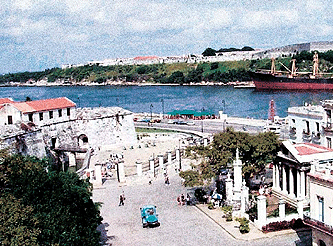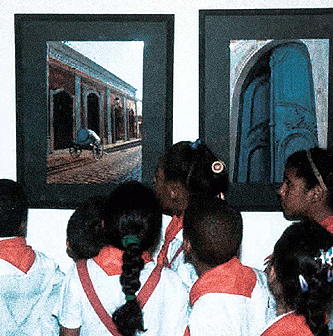The recovery of historical centres and their integrated development
The office of the Historian in practice
The Historical Centre was declared a National Historic Monument in 1978, and since 1981 the State has provided centralized financial resources to the zone, within the five-year budget of the national economy. This situation led to its being recognized in 1982 as a World Cultural Heritage site, together with the system of fortifications that defended the city.
With the economic crisis caused by the fall of the socialist bloc, the State made a decision of utmost importance for the continuity of the rehabilitation work: rather than continuing to transfer financial resources, it provided the Office of the Historian of the City of Havana with judicial and financial tools that would guarantee sustainable social and economic development. Rehabilitation was transformed from an activity subsidized by the central government into a profitable process that even contributes to the Nation.
Six premises were identified for guaranteeing an integrated, sustainable and self-financing rehabilitation: political will and decision-making at the highest level accompanied the process; recognition of the authority of a single “leader entity” for coordinating the management of the rehabilitation (Office of the Historian of the City); and establishment of a special legal code that helps the entity to make integrated plans for the area, transfers to it real estate heritage in use and allows for the development of a series of mechanisms for applying a decentralized economy.
The proclamation of Legal Decree Number 143 (October 1993) establishes the following prerogatives for the Office of the Historian:
•direct subordination to the Central government;
•legal status;
•the ability to apply special tax policies for contributions and rehabilitation;
•creation of its own management system for tourism and the tertiary sector in general;
•creation of the Master Plan Office, an interdisciplinary team responsible for the integrated planning and management of the development of the Historic Centre;
•expansion of its structure in order to follow the entire sequence.
In order to develop the model, the Office has specialized human resources, creating and consolidating an organizational structure with specific directors and departments and a managerial system. This structure is capable of conducting the process from strategic integrated planning – environmental in the broadest sense (economy-society-territory-habitat) – through to the physical recovery of buildings and urban spaces, including the organization and running of the investment process that guarantees it, and the possibility of managing international cooperation.
The rehabilitation process is structured by linking integrated development policy concepts with mechanisms of self-financed recovery and cultural development, as set out in the Integrated Development Plan. The Plan established five main policies:
•Protect national identity through research, promotion and development of culture.
•Protect heritage, rehabilitating the area through an ongoing Integrated Development Plan and with legal tools. This Plan is conceived as a “navigation map”, and as an aggregate of participatory management and planning instruments that make directing the process efficient overall.
•Avoid displacing the local population, protecting it from the impact of the transformation and establishing adequate levels of habitation density and quality of life.
•Provide the area with technical and basic service infrastructure that guarantee its functioning in line with contemporary demands.
•Achieve self-financed integrated development that makes investment in the heritage recoverable and productive.
Simultaneously, the Office is in a position to develop a strong socio-cultural and economic programme as a way to promote human development in the widest sense. Finally, the current structure also guarantees the administration of the tourist, real estate and tertiary sectors to obtain financial resources. These institutions are organized in four groups that assure: compliance with and application of the policies established in the Special Integrated Development Plan; socio-cultural outreach; acquisition and administration of financial resources; and physical rehabilitation.
DOWNLOAD THE BROCHURE PDF
albanian (0.8 MB)english (0.9 MB)
spanish (0.9 MB)
ONLY TEXT
•Adopting the office’s methodology in other countries








 COUNTRY OF ORIGIN
COUNTRY OF ORIGIN